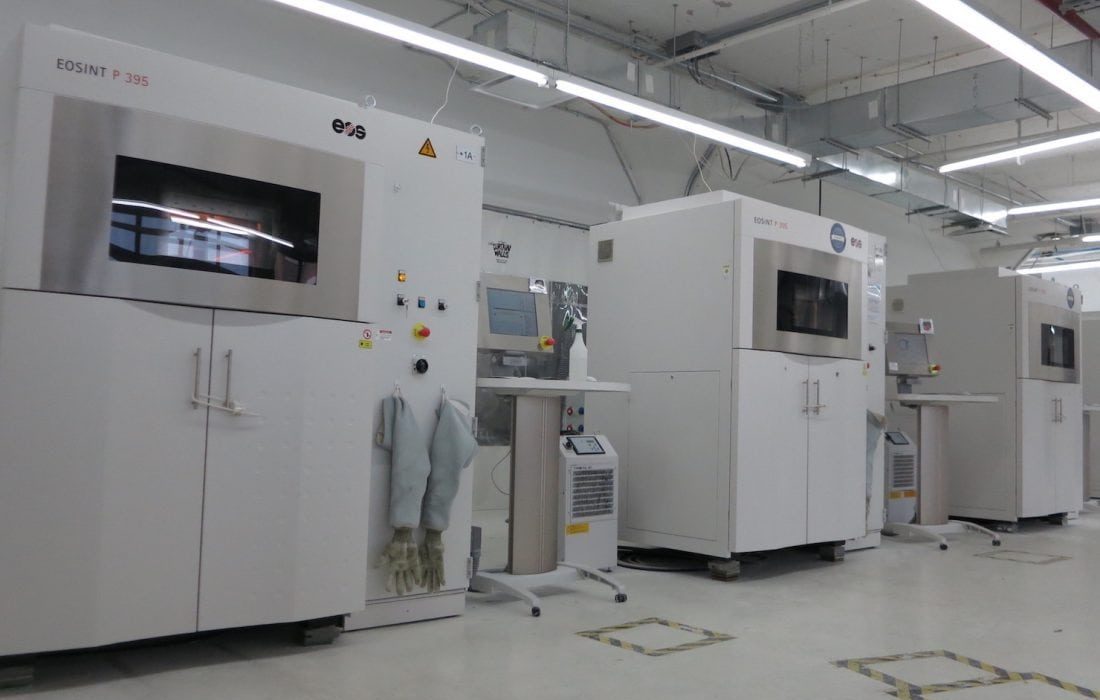
Additive manufacturing (or popularly known as 3D printing) has proven itself to rapidly manufacture strong and functional parts. The technology is changing the way products are being manufactured but alternatively it is also improving the efficiency of traditional manufacturing processes.
To put this in perspective, all manufacturing factories require the help of production aids to manufacture and assemble the products. A production aid is any device type of tool, jig, fixture, or a device used to enhance, optimize, and assist or speedup the manufacturing or assembly process.
More often than not, production aids are customized to suit the product being manufactured but manufacturing such customized tools in limited quantities is always costly.
Considering the importance of production aids and its limited quantities, 3D printing can be a perfect fit in this scenario. Factories can leverage the capabilities of 3D printing to produce them at reduced costs. 3D printing can hand a powerful tool to organizations to improve its overall plant efficiency.
We’ll first look at the benefits of using 3D printing in creating production aids.
VALUE OF 3D PRINTED PRODUCTION AIDS
- Faster Time-to-Market
With 3D printing, production aids can be manufactured rapidly. This starts a chain reaction to also speed up the pace of production and assembly, thus cutting down the time-to-market to take your product from factory to customer.
- Improved Plant Efficiency
With faster production and assembly leading to faster output and delivery, plant efficiency can be considerably improved.
- Reduced Cost of Production
By improving part repeatability and accuracy, rejections can be reduced, leading to reduced cost of production. When manufacturing jigs and fixtures, 3D printing can eliminate the time needed for iterations before finalizing on the desired jig or fixture.
- Performance Improvements
By using the design freedom capability of 3D printing, innovative and complex fixtures can be designed and printed to improve the production and assembly performance with fewer constraints.
- Better Production Aids
Compared to traditionally manufactured production aids, 3D printed production aids can be more efficient. It can be made from lighter materials but still offer comparable strength and durability. Alternatively, the tools can be topology optimized to reduce weight and material usage.
- Part Consolidation
3D printing offers the capability to consolidate multiple jigs and fixtures into a single production aid thus operators are able to perform multiple operations at the same work station using a same fixture, saving costs, storage, and handling.
- Worker Safety
As factories are getting more advanced there is even more impetus on ensuring workers’ safety. By 3D printing customized safety aid solutions such as safety latches, casings, locks, and even obsolete safety parts, the workplace safety can be improved.
TYPES OF 3D PRINTED PRODUCTION AIDS
Let’s take a look at some of the different types of production aids that can be 3D printed to improve overall plant efficiency.
Jigs & Fixtures
Jigs and fixtures are customized tools used to hold, guide and control the movement of a workpiece while other operations are carried out.
Examples of customizable jigs and fixtures include guides for burr removal, dimensional accuracy testing, sticker pasting in packaging operations, etc. All can be manufactured on demand.
Guides
Drill guides are a commonplace tool on all shop floors. They ensure that holes are drilled in their intended center and are not deflecting from this position in either linear or angular terms and are staying within the prescribed tolerance limits.
Marking Tools
In traditional manufacturing a part travels from one work station to the other as different operators perform cutting operations and it is important that the cutting accuracy and repeatability is maintained in all parts. For this, a tool can be 3D printed to perfectly identify the marks to perform accurate cutting operation.
Safety Latches, Casings and Locks
Apart from making sure the production is carried out efficiently, the plant also has to ensure the safety of its workers. For this a plant employs multiple safety tools like latches, casings, locks and more. These safety tools help minimize on-site accidents.
Go / No-Go Gauges
Go / No-Go gauges are used in a manufacturing plants as a testing tool to test weather a finished part meets the dimensional standards. A Go/No-Go gauge can easily identify any deflection of the part in terms of its form, shape and dimension. It can rapidly conform or reject a part according to the fit in the gauge instead of using other measurement tools like calipers.
Maintenance Parts
Custom quality check and maintenance parts a can be rapidly manufactured. Simple customizable tools such as stopper tools used to tighten nuts and bolts can be kept in the individual machine’s toolbox, thus increasing maintenance efficiency while saving time.
3D PRINTING OF PRODUCTION AIDS
Production aids can be 3D printed through various 3D printing technologies. For industrial printing, the commonly used technologies include Selective Laser Sintering (SLS), Selective Laser Melting (SLM), Direct Metal Laser Sintering (DMLS) and Binder Jetting.
SLS 3D Printing
Selective Laser Sintering (SLS) is a powder-bed fusion technology. It uses a powdered material that is sintered via a laser to form the object. This technology offers greater design freedom than some of the other 3D printing technologies. For parts involving complex designs, SLS can be effectively used.
SLM & DMLS 3D Printing
FDM printing can offer cheaper production aids, SLA can offer aids with smoother surface finishes while SLS can provide greater design freedom but all these technologies print only with polymers. For industrial parts requiring heavy-duty jigs, metal 3D printing is recommended. Metal 3D printing technologies suitable for production aids include SLM, DMLS and Binder Jetting.
Selective Laser Melting (SLM), Direct Metal Laser Sintering (DMLS) are both powder-bed fusion technologies but for metals. Both of these technologies can be used for small-size precision production aids.
Binder Jetting
Binder Jetting technology can be used in case of large parts. This technology also uses powdered metal material but uses a binder material to fuse the metal particles together. The greatest advantage of binder jetting is that it can manufacture parts at a fraction of the cost compared to DMLS/SLM and Material Jetting. Moreover it is suitable for low-to-medium batch production when multiple tools need to be mass produced for the entire factory.
CONCLUSION
Factories can leverage 3D printing to create high-quality production tools to improve their plant efficiency. With 3D printing’s wide applicability, range of materials, design freedom and manufacturing flexibility, this technology provides many benefits that should not be overlooked.


